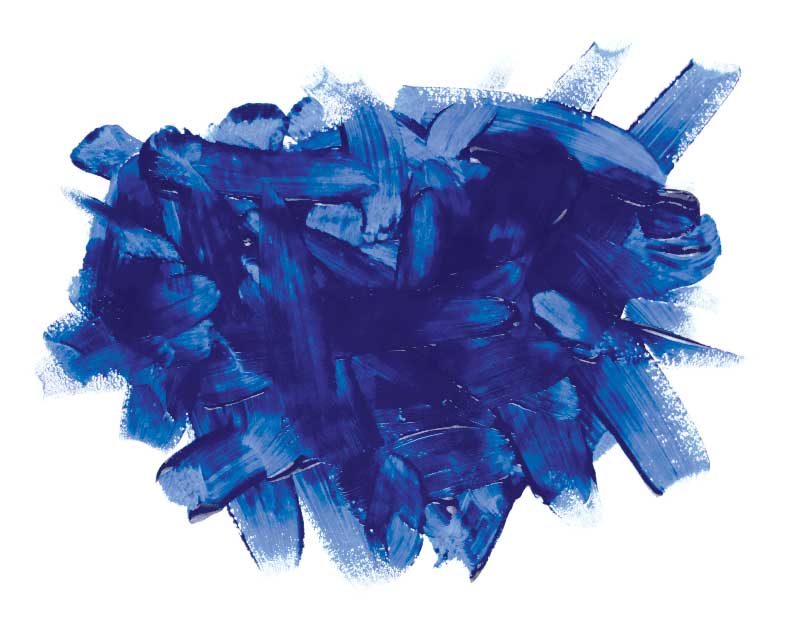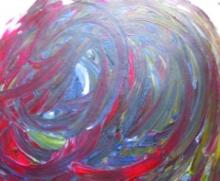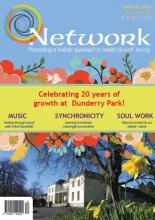Art Therapy: Harnessing the healing potential of Creativity

“Allow an image to come up without censoring,
Without thinking,
Trust it, let it come.
The more you can say I have no idea what this image is about
The more likely it is to be about a great deal.”
L. Silverstone, 2001
What is Art Therapy?
Art Therapy is a form of psychotherapy that uses art media as its primary method of communication. Through the use of art materials, personal change and growth can take place, in a safe non-judgmental environment, where personal issues are reflected on with the therapist, either one-to-one or as a group member. For clients coming to Art Therapy, no artistic skills are necessary. ‘It is the ‘art’, that is its special contribution, leading to change...” (Kramer, 1971). At its heart is the creative process; the healing agent in Art Therapy being art itself, gradually releasing feelings and emotions, and offering insight beyond the rational mind.
Art Therapy definitions vary; due to its dual origins in art and psychotherapy. It can focus on:
- Dealing with the art making process as therapeutic in and of itself, or on
- The psychotherapeutic process, which develops within a triangular relationship between therapist, client, and the art image produced in the session. In this case the therapist facilitates the client’s symbolic self-expression, as communicated in the art image, and draws interpretations from the client
The History of Art Therapy
The therapeutic value of art has long been acknowledged in history. Many cultures have been aware of the healing virtues of art activities, whether these were individual, group or cultural expressions. Visions and dreams, masks and symbols, and art objects endowed with mystical powers were all part of the shaman’s or healer’s tools. In every culture, decoration, jewellery and paints all played their part in celebrations and life cycle rituals. People have always been familiar with the power of creative expression, but it was not until the turn of the last century that a rich variety of influences came together and Art Therapy emerged as a way of focusing this creative power in modern psychological healing methods. Its healing power was anticipated by Carl Jung, who introduced it to psychotherapy through his practice of using active imagination, where image and meaning are identical.
The origins of Art Therapy are in art education. Many of its pioneers were art educators, others came from a psychoanalytic tradition, influenced by the theories of Jung, Freud, Klein and Winnicott. It developed as a profession in the post-war era in Britain and the U.S.A., when modern art movements, such as expressionism, surrealism, and symbolism were concerned with the subjective, rather than the objective, experience. A growing psychoanalytic movement was generating new insights into human motivation and behaviour and the development of child-centred approaches in education acknowledged the importance of the unique potential and creativity of each person.
From the late 1930’s, Art Therapy pioneers worked in psychiatric hospitals, sanatoriums, and schools, developing a language and literature of Art Therapy and becoming involved in establishing professionally recognised training courses. Art Therapy training extended to Ireland approximately 25 years ago. This training takes place at The Crawford College of Art and Design, Cork. At present, The Irish Association of Creative Arts Therapists (IACAT), the professional representative body for art, music, drama, and dance movement therapies, is working to achieve state registration in Ireland.
Why use Art Therapy?
Art Therapy differs from other therapies in that it employs various art media; paint, clay, collage, to facilitate the clients’ expression of areas of their experience which are beyond the reach of words. For example, people who are vulnerable, who don’t have language, or whose language is limited, find they can use the arts where other interventions are not possible.
Fritz Perls, known as ‘the father of Gestalt therapy’, believed that the verbal and psychoanalytical approach was in danger of prolonging the neurotic split between the intellect and emotions, and Jung said that "the needful thing is not to know the truth, but to experience it... to find our way to the inner, and perhaps wordless, irrational experience... nothing is more important than finding our way to these far-off goals". (Jung 1953: CW 7, 67-91)

For example, here is an art image which helped me to find my way to an inner, wordless experience. Initially, I was going to tear it up, as I disliked it. Yet, a lot of energy went into painting it. As yet, I did not know its truth, but itself and a sequence of artmaking, later served me well; a theme had emerged connecting me with the painful feelings of the child within, needing care and attention. Through ongoing art work, I continued to gain a clearer understanding of myself.
The healing potential of Art Therapy
The writings of Carl Jung, Hans Prinzhorn, James Hillman, Shaun McNiff, Joseph Campbell and others are of great interest to me. Instead of seeing pathology in a painting as something sick or negative, they saw it as “part of the soul’s nature.” Pathology is not limited to patients; it is in all of us, and is “essential to the eco system of soul.” (McNiff, 1992)
During Europe’s surrealist era, Prinzhorn and others had a growing interest in the art of the mentally ill, known as “Outsider Art”. Later, when he became a psychiatrist, he was not interested in the clinical use of art work for diagnosis and treatment, but felt that the spontaneous art works of mental patients were ‘the eruptions of a universal human creative urge.’ This was sometimes in keeping with the life-changing positive qualities I noted in the art expressions of patients with whom I worked. Art seemed a natural antidote to their disintegration and alienation. At times, amazing images emerged to befriend and guide the soul. It was a privilege to be part of this. In accessing the natural healing in their art making, and facilitating them in the confidential space of an Art Therapy setting, they were supported in their healing.
I am reminded of the shamanic origins of art as healing, and ‘its definition of illness as soul loss (the essential vitality of the person), corresponding to the lost soul, as a lost image, a lost presence.” When people are suffering from emotional upheavals, they are in direct contact with powerful energies that can be channelled into the making of images. ‘From initially making a painting to the dialogues we have with it afterwards, to staying with the feelings we have about it, what it says to us, and the things we say to it, the stories we tell about how we made it, the memories it evokes – all are aspects of the Art Therapy experience. Movement and change take place during meditation on the art image, and as the image gathers us together around a common focus, we begin to re-connect’. (McNiff, 1992)
Art Therapy is a soul journey, setting out, touching into sacred places, being challenged and returning each time, giving and sharing the joy that brings a growing conviction that out of darkness comes great light. I am reminded of T.S. Eliot's words:
“We shall not cease from exploration
And the end of all our exploring
Will be to arrive where we started
And know the place for the first time.”
Teresa Healy is a qualified Art Therapist working in Dublin.
- Von Brockdorff, Eric ed. (1995) Hanz Prinzhorn. Artistry of the mentally ill, NY., Springer.
- McNiff, Shaun, (1992) Art As Medicine, Creating a Therapy of the Imagination. Boston and London, Shambhala.
- Irish Association of Creative Arts Therapists. (I.A.C.A.T.)
- British Association of Art Therapists – (B.A.A.T.)
Latest Issue
Upcoming Events
-
17/04/2020 to 26/04/2020
-
18/04/2020
-
23/04/2020
-
15/05/2020 to 23/05/2020
-
16/05/2020 to 17/05/2020
Recent Articles
Article Archive
- November 2012 (3)
- December 2012 (1)
- January 2013 (7)
- February 2013 (6)
- March 2013 (7)
- April 2013 (7)
- May 2013 (7)
- June 2013 (3)
- July 2013 (7)
- October 2013 (2)

